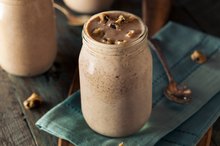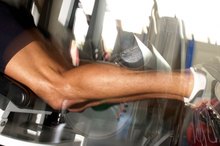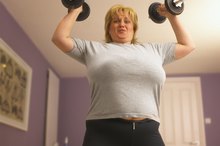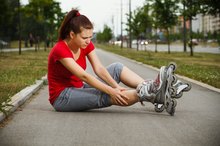How to Loosen Contracted Muscles
Muscles contract when being used and will relax or loosen when not in use. However, your muscle may sometimes stay tight or suddenly involuntarily contract. An involuntarily contracted muscle is often called a cramp or a spasm. Muscle cramps can occur for different reasons. Usually overuse is the most common reason, but dehydration, vitamin deficiencies and certain medications can also cause muscle contractions. Several different options can help to loosen a contracted muscle, depending on the exact cause of your muscle cramp.
Stretch out your muscle. Although initially painful, stretching a contracted muscle helps it to loosen and relax. The exact stretch will depend on which muscle is cramped. Many times, leg muscles are affected. Sit on the floor with your legs spread wide and outstretched in front of you. Slowly bend your upper body over the affected leg, reaching toward your toes. Do not bounce your muscles but gently lean forward.
How to Make a Muscle Milk Shake
Learn More
Massage your contracted muscle. Using your fingers, gently press into the muscle and rub in a circular motion. The pressure relaxes a contracted muscle. If you are unable to loosen your muscle, schedule a massage with a physical or massage therapist.
Drink plenty of water to help loosen your contracted muscle. Many times, muscle cramps occur because of dehydration. Water and sports drinks relieve your muscle contraction.
How to Stop Leg Cramps When Playing Football
Learn More
Add more potassium to your diet. For a muscle contraction, eat a banana or drink orange juice. The potassium helps to loosen your muscles.
Apply heat to your affected muscle. Take a warm shower or bath to help the muscle relax. Apply a heating pad or hot water bottle to the muscle. The heat allows your muscle to loosen.
Related Articles
References
- MedlinePlus: Muscle Cramps
- University of Maryland Medical Center: Muscle Cramps
- Finsterer J, Löscher WN, Wanschitz J2, et al. Secondary myopathy due to systemic diseases. Acta Neurol Scand. 2016;134(6):388-402. doi:10.1111/ane.12576
- National Institute of Arthritis and Musculoskeletal and Skin Diseases. Basic facts about muscles. Updated July 2019.
- Biga LM, Dawson S, Harwell A, et al. Chapter 10. Muscle tissue, In: Anatomy & Physiology. XanEdu Publishing Inc; 1st edition; 2013:976-984
- The Myositis Foundation. Polymyositis
- The Myositis Foundation. Dermatomyositis
- Centers for Disease Control and Prevention. What is muscular dystrophy? Updated December 2, 2019
- Myasthenia Gravis Foundation of America, Inc. MG facts
- The ALS Foundation. What is ALS?
- Medline Plus. Rhabdomyolysis. Updated July 16, 2019
- American Heart Association. What is cardiomyopathy in adults? Updated March 31, 2016
- Finsterer J, Löscher WN, Wanschitz J2, et al. Secondary myopathy due to systemic diseases. Acta Neurol Scand. 2016;134(6):388-402. doi:10.1111/ane.12576
- Santilli V, Bernetti A, Mangone M, et al. Clinical definition of sarcopenia. Clin Cases Miner Bone Metab. 2014;11(3): 177–180. doi:10.11138/ccmbm/2014.11.3.177
- The IQVIA Institute for Human Data Science. Understanding neuromuscular disease Care. 2018.
- Brigham and Women’s Hospital. Electromyography
Writer Bio
Ireland Wolfe has been writing professionally since 2009, contributing to Toonari Post, Africana Online and Winzer Insurance. She obtained her Bachelor of Arts in psychology and Master of Arts in mental health counseling. She is also a licensed mental health counselor, registered nutritionist and yoga teacher.









